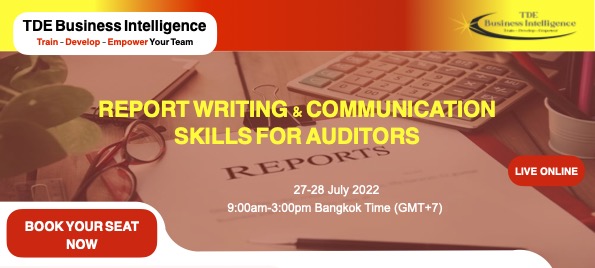
OBJECTIVES
The audit report is not the end product of internal auditing: it is however perhaps the most important means to the end product. The end product is primarily the communication of reassurance to management and to the board that their systems of governance, risk management and internal control are sound, and/or persuasive advice on how to improve them. So the quality, including the clarity, of internal audit reports is crucially important and this course seeks to show how this can be achieved. There are several purposes, types and styles of internal audit reports, and this course sets out to recommend best and successful practice with respect to each, and how they should be coupled with other forms of communication.
WHO SHOULD ATTEND?
Primarily this course is designed for internal audit management and also for those involved in conducting internal audit work professionally below the level of ‘chief audit executive’. It will also be valuable for those who oversee internal audit who need to understand the requisite nature of the internal audit functions they oversee.
MOTHODOLOGY
The course is designed to be participative in a non-threatening, optional way. Each session comprises a presentation by the course leader with an opportunity for participants to raise questions for group discussion and for comment by the course leader. The course leader will raise important issues for participants to consider before respond to at their discretion. The course is delivered virtually, using Zoom as the meeting platform.
COURSE MODULES
Day 1
Session 1: Inter-personal skills for internal auditors
- Open rather than secret
- Participative rather than autocratic
- Enquiring rather than expert
- Flexible rather than domineering
- Popular rather than unwelcome
- But … firm rather than weak, when necessary
- And … professional rather than amateurish
Session 2: Reports on internal audit engagements
- Differences between assurance and consulting engagements
- Report structure and report balance
- Reporting style: focus on observed good practice and improvement opportunities
- Summary and detailed reports
- Conclusions and expressed opinions
Session 3: Engagement reports and close-out meetings
- What is negotiable in a draft engagement report
- Avoiding delay issuing final audit report
- Close-out meetings as an essential means of communication
- Face-to-face or virtual close-out meetings
- Who should attend close-out meetings
- Determining audit report circulation
- Secure issuance and retention of audit reports
Session 4: Consulting engagements
- Determining which consulting engagements to undertake
- Determining their scope
- Flexibility of form and content of reports depending on the engagement and client’s needs
- Utilising intelligence gathered during consulting engagements
Day 2
Session 5: Audit follow-up
- Monitoring management’s implementation of agreed recommendations
- The place for follow-up audit visits and follow-up reports
- Determining the limits of internal audit’s involvement in making changes
Session 6: Reports to senior management, boards and audit committees
- Future planned programme of engagements
- Audit results
- Overall opinions
- Communicating the acceptance of risks
Session 7: Published reports
- Internal audit input to audit committee reports
- Published reports by internal audit
- Good use of written English and other languages
Session 8: Course recap, and what internal auditing Standards say
